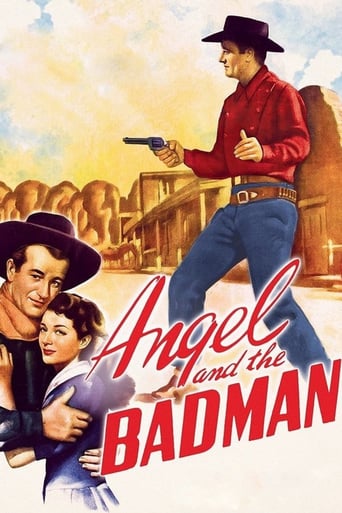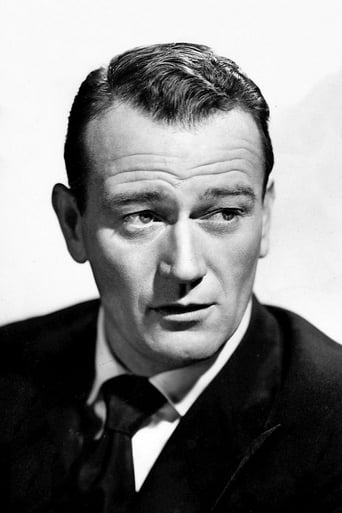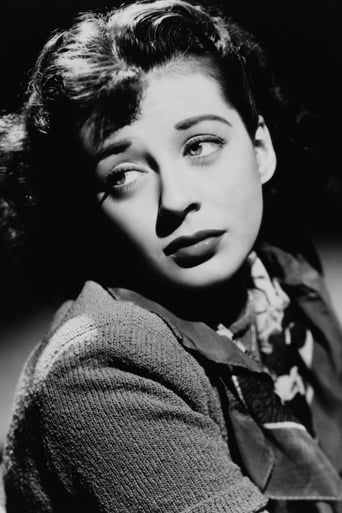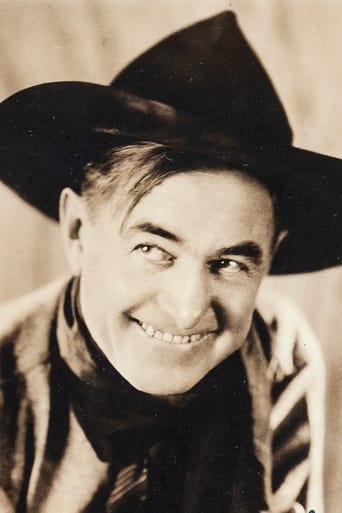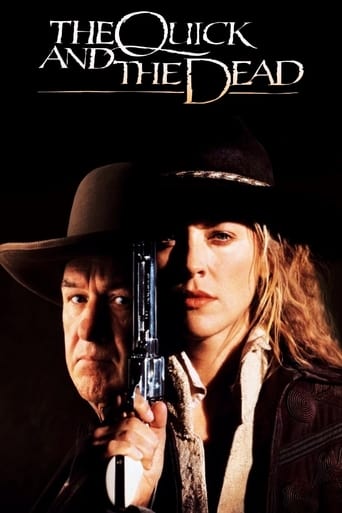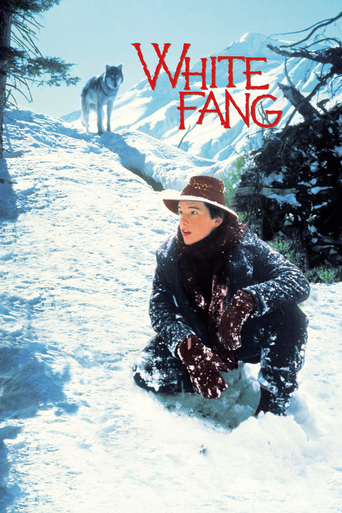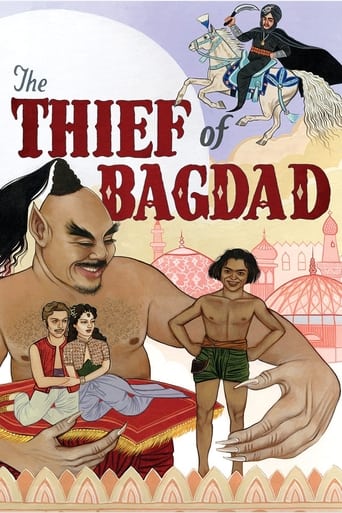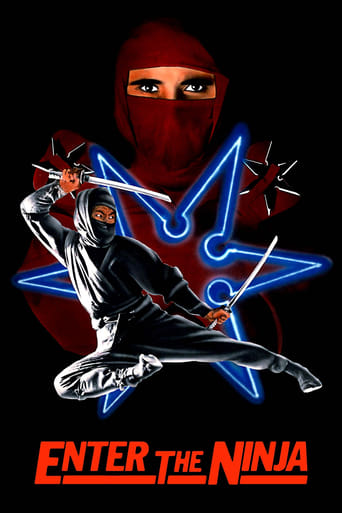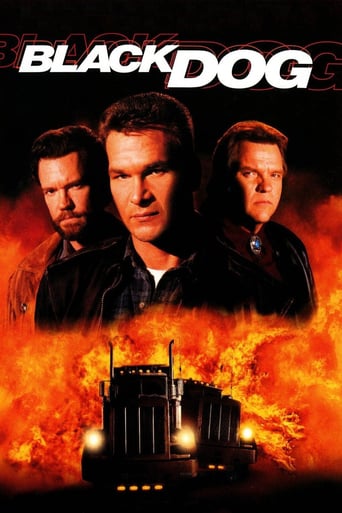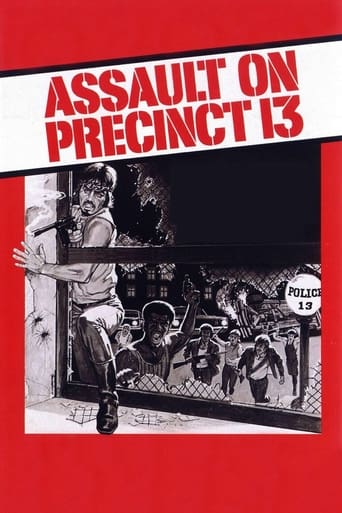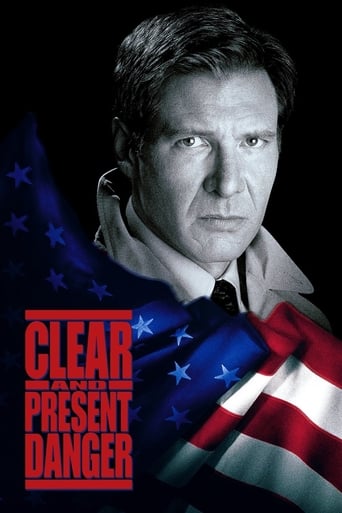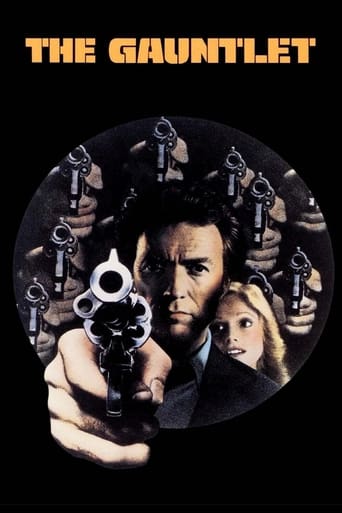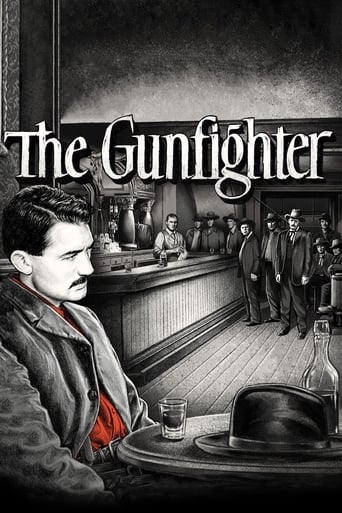Angel and the Badman (1947)
Notorious shootist and womanizer Quirt Evans' horse collapses as he passes a Quaker family's home. Quirt has been wounded, and the kindly family takes him in to nurse him back to health against the advice of others. The handsome Evans quickly attracts the affections of their beautiful daughter, Penelope. He develops an affection for the family and their faith, but his troubled past follows him.
Watch Trailer
Cast


Similar titles
Reviews
RELEASED IN 1947 and written & directed by James Edward Grant, "Angel and the Badman" is a Western starring John Wayne as a gunslinger in Arizona who finds temporary sanctuary with some pacifistic Quakers. And maybe love too with the beautiful daughter (Gail Russell). Bruce Cabot plays the gunman's nemesis while Harry Carey plays the aged-but-still-formidable marshal. It's too bad that this was shot in B&W because the locations are spectacular. Wayne was facing his 40th birthday when this was filmed, which is funny because the daughter's mother (Irene Rich) keeps referring to how "young" he is. In any case, John was lean and relatively youthful-looking. On the other side of the spectrum, Gail is utterly stunning with her captivating eyes. Speaking of the feminine cast, saloon girls Joan Barton and Rosemary Bertrand are nothing to sneeze at. One problem is that the romance is too blatant and develops way too quickly. But there are a few praiseworthy action sequences. One notable scene involves a couple in a wagon going off a cliff into a body of water. The subtext relays three philosophies on violence: (1.) living it as a lifestyle, (2.) resorting to violence only when justifiable and more peaceful ways have been attempted or (3.) relying completely on nonviolent methods. Needless to say, the middle position is the best one and is, in fact, what the New Testament supports. THE MOVIE RUNS 1 hours & 40 minutes and was shot entirely in Arizona (Sedona, Monument Valley & Flagstaff). GRADE: B-
A prolific screenwriter, James Edward Grant directed only three or four films, of which this is the first and the best, The Quakers are observed most sympathetically and the characters for the most part hold the interest and are neatly etched, despite a certain superficiality of approach: Miss Russell is charming, Mr. Wayne more than adequate, and the predictable romance is not allowed to obtrude too much on the action, splendidly staged by 2nd unit director Canutt against some impressive natural backgrounds. Although not nominated for any big Hollywood awards, I thought Stout's black-and-white cinematography was certainly the best Hollywood effort of the year and definitely had the edge over the two American films that were nominated in this section: Lang's The Ghost and Mrs Muir and Folsey's Green Dolphin Street. And it's good to see that Republic have taken good care of the master negative. Current prints are just as beautiful as those struck in the year of release. For a debut director, Grant has handled the movie with gratifying assurance and flair. Admittedly he was helped out by action specialist and long-time Wayne ally, Yakima Canutt. But he has certainly drawn sympathetic and/or enthralling performances from all his players. Of course his writing and dialogue have considerable appeal too. But it's hard to imagine any other players but Wayne and Russell in the lead roles, Carey as the philosophical marshal, and Cabot as the irredeemably mean bad guy. And no-one but Olin Howlin could handle a cowardly blatherskite with as much conviction and personal charisma as Olin Howlin. And for his behind-the-camera debut, producer Wayne has actually invaded John Ford territory and has brilliantly succeeded in equalling the master on his own turf.
The "badman" in this movie is Quirt Evans. Since he is played by John Wayne, we wonder, "Just how bad can he be?" I mean, has John Wayne ever played a badman in the movies? It turns out, much as we suspected, that for all the talk about his being a badman, it seems to be just that, talk. Apparently, he once worked as a lawman for Wyatt Earp. Then he became a cattleman for a while. But one day, Wall Ennis, the man who raised Quirt like a father, was shot down by Laredo Stevens (Bruce Cabot) while another man grabbed his hand as he was going for his gun. That's when Quirt sold his herd and began plaguing Laredo, hoping to goad him into a gunfight in front of witnesses. For example, when Laredo and his gang rustle some cattle, killing all the cowboys who were herding them, Quirt and his boys bonk Laredo's gang over the head, knocking them off their horses. Then Quirt's gang takes off with the cattle and presumably sells them. I guess the idea is that the cattle were already stolen, so what Quirt did was not really so bad.Before that however, at the beginning of the movie, Quirt beats Laredo to some land he wanted. Laredo's gang chases him until he collapses from exhaustion and a gunshot wound. A couple of Quakers help him get to a telegraph station to make the claim and then take him in so that he can convalesce. One Quaker in particular, Penny (Gail Russell), is the "angel" in this movie.Dr. Mangram (Tom Powers) comes over to take the bullet out. He makes a snide remark about the way the wicked always seem to be able to survive gunshot wounds while the godly succumb to infection, and Penny's father chastises him, saying, "You so-called atheists. You always feel so compelled to stretch your godlessness." With this brief exchange, the movie expresses its attitude toward atheists. First, the atheist is rude and churlish, entering the house of a family he knows to be devout and mocking their religion. For a long time in the movies, atheists were never allowed to be congenial and easygoing, as in reality, many of them are. Movie atheists had to let everyone know just how much they despised religion. Second, this movie was made at a time when a lot of people believed that there really was no such thing as an atheist, that their denial of God's existence was a self-deluding pretense. Hence the use of the term "so-called."Another feature of the stereotypical movie atheist is the emphasis on reality and logic, at the expense of sentiment and feeling. Mangram says to Penny's mother, "You can carry this head-in-sand attitude just so far in the world of reality." She replies, "We assure you that you will finally realize that realism untempered by sentiments of humanity is really just a mean, hard, cold outlook on life." She is right, of course. But that is precisely the sort of thing David Hume might have said. In reality, atheists have as much sentiment as anyone else, but movie atheists tend to lack these feelings.Anyway, Quirt and Penny fall in love. She is willing to follow him anywhere, but he is not sure he wants to be tied down. So this struggle goes on throughout the movie, while she acquaints him with the views of the Society of Friends, such as that a person can harm only himself, even if he appears to harm someone else. One day, she gets him to leave his gun behind while they go for a ride. As this is shortly after the cattle rustling incident, Laredo and his boys show up and give chase until the wagon goes over a cliff and into the water. Penny almost drowns. Quirt gets her back to the house and Dr. Mangram is sent for. When it looks as though Penny is likely to die, Quirt decides to kill Laredo.Right after he rides off, Penny comes to. She seems to be completely well. Mangram is stunned. "I can't understand it," he says. "I can't understand it at all. There must be some logical, scientific explanation. I am too old to start believing in miracles." And thus does the movie refute the atheist.A common feature of the Western is the gunslinger with a guilty past. He wants to hang up his guns, but there is one last thing he must do. Another recurring feature involves revenge. The hero relentlessly pursues his goal of getting his revenge against a man who killed someone he loved. But when the moment arrives, he renounces his revenge. However, the man he was pursuing somehow gets what is coming to him anyway.And so it is with "Angel and the Badman." Quirt rides into town and calls out Laredo, who is in the saloon with the sidekick who helped him gun down Wall Ennis. Suddenly, Penny's parents ride into town in a wagon with Penny in the back. She gets Quirt to hand her his gun. Just then, Laredo and his companion step out into the street. Quirt turns around unarmed. And then Marshall McClintock (Harry Carey), who has been threatening to hang Quirt and Laredo throughout the movie, shoots Laredo and his friend, killing them both. Quirt tells McClintock that from now on he is a farmer.It is worth noting that, although Penny and her family would have been disappointed with Quirt if he had killed Laredo, they are just fine with the way McClintock killed Laredo instead. In other words, pacifists manage survive in a violent world, because someone else is willing to do the killing for them.
A western the good times with John Wayne showing here that really was the great actor of westerns in the role of Quirt Evans, an out-of-law is delighted with the daughter of a pastor, and radically change his life. The film produced by Republic, was directed by James Edward Grant, also a writer and screenwriter of numerous films, among them: The Sheepman, The Alamo, The Last Wagon, The Proud Rebel, Hondo, McLintock !, and many others. But "Angel and the Badman" had the merit to meet John Wayne and the beautiful Gail Russell, who, for all we know, lived a great passion for years and years. The film, in excellent black and white, has a very simple story, and is masterfully played by Wayne and Russell. It also has the presence of Harry Carey in the role of deputy chasing Quirt wherever he goes, developing a remarkable character and contributing to a film, initially without much pretension, stay forever etched in our memory. It is a nostalgic film that transports us to a very different era and that delights in the simplicity and competence of the actors and director.

